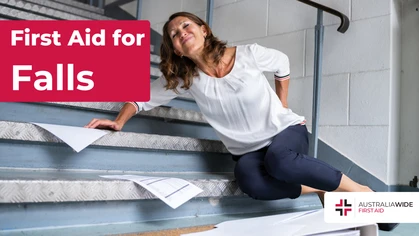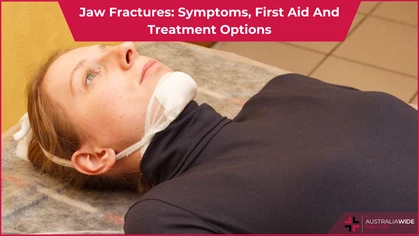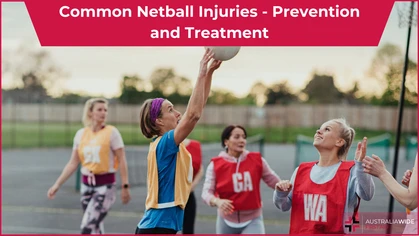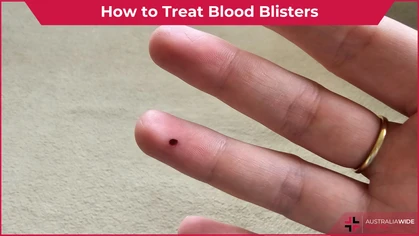12 Common Running Injuries: Prevention and Treatment

Injury

Running is an enormously popular sport, as it is free to do and can help improve heart and lung health. However, many people experience running injuries at least once a year. Luckily, there are treatment and prevention options available to help keep you running.
Common running injuries include Achilles tendonitis, the runner's knee, and shin splints. To prevent these overuse injuries, it is important to stretch before and after running, wear proper shoes, and warm up and cool down properly. The human body was made to run. Running is the most natural and simplest form of exercise that we can do, and it’s also one of the most effective ways to stay in shape. And yet, despite its many benefits, running is also one of the most common causes of injuries. In fact, according to Sports Medicine Australia, up to 70 per cent of runners will suffer from an injury each year.How popular is running in Australia, and why?
According to AusPlay, running is the fourth most popular participation sport in Australia with over 3.3 million people regularly hitting the pavement. And it’s not hard to see why. Running is a great way to get fit and stay healthy, it’s free (all you need is a good pair of shoes), and it can be done anywhere, anytime.Why is running so good for you?
Well! Obesity is hard, running is hard! Choose your hard! Arthritis is hard, running is hard! Choose your hard! And so on, with stress, bad mood, lungs and heart health. Running is good for you in so many ways! But as popular as running is, it’s also one of the most common causes of injuries. Here’s a look at some of the most common injuries and some tips on how to avoid them.Common Running Injuries
Achilles tendonitis
The Achilles tendon is the largest in the body and it connects the calf muscle to the heel bone. Achilles tendonitis is a condition that typically affects runners in the tendon and becomes inflamed, swollen, and painful. It’s often caused by overuse or repetitive stress on the tendon, and it can be extremely painful.Runner’s knee
Runner’s knee is a condition that can be caused by overuse or repetitive stress on the knee. It is often referred to as patellofemoral pain syndrome, and it is the most common overuse injury among runners. Symptoms of the runner’s knee include pain around or behind the kneecap, swelling, and difficulty walking or running.Shin splints
People with flat feet are prone to develop shin splints. Shin splints are a common running injury located in the lower leg or shin bone that can be caused by several things, such as overtraining, running on hard surfaces, and wearing improper shoes. Shin splints cause pain and inflammation in the shin area and can make it difficult to run.IT band syndrome
Another common injury that runners experience is IT band syndrome. The IT (iliotibial) band is a thick band of tissue that runs along the outside of the leg from the hip to the knee. IT band syndrome occurs when this tissue becomes inflamed and rubs against the bone, causing pain. IT band syndrome is usually caused by overtraining, improper footwear, or weak hip muscles.Hamstring injuries
The hamstring is the group of three muscles that run along the back of your thigh, from your hip to your knee. Hamstring injuries are common in runners and can range from a mild hamstring strain to a more serious hamstring tear. Symptoms of a hamstring injury include pain and tenderness in the back of the thigh, swelling, bruising, and muscle pull.Iliotibial band syndrome
Iliotibial band syndrome (ITBS) is a condition that results when the iliotibial band, a thick band of tissue that runs along the outer edge of the thigh from the hip to the knee bone, becomes inflamed. ITBS is a common injury and typically affects runners, cyclists, and other athletes who repetitively stress the IT band. Symptoms of ITBS include pain and tenderness on the outside of the knee, swelling, and stiffness.Plantar fasciitis
Plantar fasciitis is caused by inflammation of the plantar fascia, a band of tissue that runs along the bottom of the foot. The main symptom of plantar fasciitis is a pain in the heel, which may be sharp or dull and may worsen after standing or walking for long periods of time.Stress fracture
Stress fracture injuries occur when the body is unable to repair the tiny bone cracks due to repetitive stress. This can happen when you run too much, too fast, or on hard surfaces. The most common sites for stress fractures are the shin, foot, and hip. Symptoms of a stress fracture include pain that gets worse with activity, tenderness to touch, and swelling.Ankle sprain
Ankle sprains appear when the ligaments surrounding the ankle joint are stretched beyond their limits and tear. Ankle sprains are usually caused by rolling the ankle inwards (inversion) or outwards (eversion). Most ankle sprains occur during sports or other physical activities, but they can also happen simply by walking on uneven ground or stepping in a hole. Symptoms of an ankle sprain include pain, swelling, bruising, and difficulty bearing weight on the affected foot. In severe cases, the ankle may feel “unstable” or “weak.”Blisters
A blister is a small pocket of fluid that forms between the upper layers of skin. Blisters are often caused by friction, such as when you wear ill-fitting shoes or rub your skin against a rough surface. If the blister is large or painful, you can cover it with a bandage to protect it from further irritation. However, do not puncture the blister, as this can lead to infection. Symptoms of a blister include pain, redness, and swelling. You may also see a clear or yellowish fluid inside the blister.Temperature-related injuries
Heat-related injuries, such as heat stroke and heat exhaustion, occur when your body is unable to regulate its internal temperature. This can be due to exposure to hot weather or strenuous physical activity in warm conditions. Symptoms of heat-related injuries include dizziness, headache, nausea, and confusion. If you experience any of these symptoms, it is important to seek medical attention immediately.Prevention of Common Running Injuries
There are several things you can do to prevent running injuries. First, it’s important to stretch before and after running. Second, you should wear proper shoes that offer support and cushioning. Third, you should warm up properly before running and cool down properly after running. And finally, if you’re prone to injuries, it’s important to listen to your body and take breaks when needed. If you do experience an injury, it’s important to rest and ice the affected area. You should also see a doctor if the pain is severe or if you’re unable to put weight on the affected limb.Treatment of Common Running Injuries
Most running injuries are soft tissue and can be treated at home with the RICER method:- Rest: You should rest the injured part immediately to reduce internal bleeding and swelling, and to prevent the injury from becoming worse.
- Ice: Apply an ice pack to the injured part to help limit inflammation, and to reduce pain and swelling. Ice packs should only be placed on the injured part for 10 – 15 minutes, before being removed and then reapplied once the injured part becomes warm again i.e., after 30 – 60 minutes. Ice packs should never be applied directly to the skin, and should instead be wrapped in a cloth or other barrier.
- Compression: Wrap the injured part with an elastic bandage to help limit swelling.
- Elevation: Raise the injured part above the heart to reduce blood flow.
- Referral: Seek professional medical advice to assess the extent of the soft tissue damage.
Warm Up and Cool Down Routes
Warm up:
- Start with a slow jog for 5 minutes to get your heart rate up and increase blood flow to your muscles.
- Then, do some dynamic stretches, such as leg swings, butt kicks, and high knees.
- Finally, end with a few strides (accelerating to near your max speed for 30-60 seconds) to get your muscles ready for running.
Cool down:
- Start with a slow jog for 5 minutes to gradually lower your heart rate and allow your muscles to cool down.
- Then, do some static stretches, such as hamstring curls, quad stretches, and calf raises.
- Finally, finish with a few minutes of walking to fully cool down your body.
Final Tips for Preventing Running Injuries
If you follow these tips, you can help prevent running injuries. However, even if you do everything right, sometimes injuries happen. If you do experience an injury, don’t forget to RICER it! And if the pain is severe or you can’t put weight on the affected limb, be sure to see a doctor or it can lead to a more serious injury.
Originally published at
https://www.australiawidefirstaid.com.au/resources/12-common-running-injuries
as part of the Australia Wide First Aid Articles Library









